Why Northern Australia?
Host: Annaburroo Station
Written by Barb Phillips – Manager, Annaburroo Station.
In a nutshell, I have no idea why the idea of northern Australia appealed to me. The warmth, the palm trees, the ‘frontier ring’ it had about it, whatever it was, I knew it was for me.
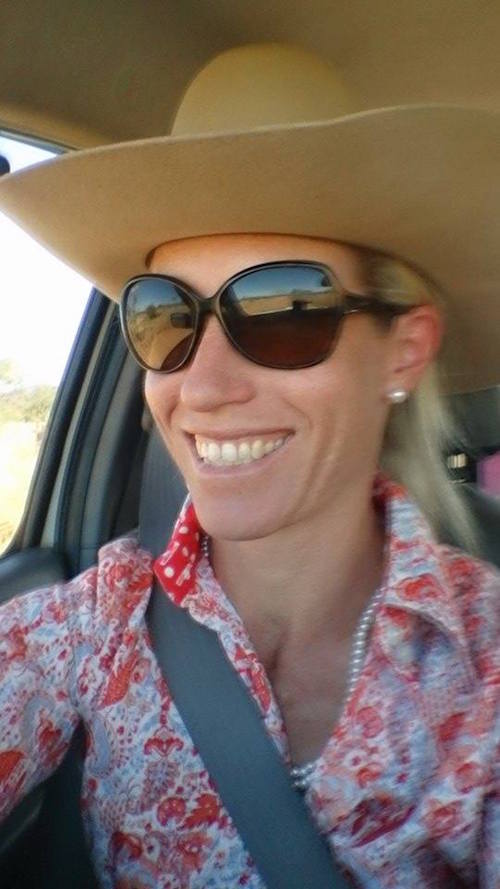 Me, Barb.
Me, Barb.
My name is Barb Phillips. I grew up in Sydney with my Mum and step Dad, went to Abbotsleigh School for girls and studied Bachelor of Agricultural Economics at Sydney University. It was in my second year of studying at university that I felt this persistent desire to head north. Whether it was due to overhearing country students talking about their lives growing up in western New South Wales, or the fact that I had travelled to the US, Europe, and Asia but hadn’t seen Australia — I am not sure what spurred this curiosity of the north.
My Dad lived in Berry Springs so this is where I found myself in 1996. My first job was to prune mango trees and plant bamboo in the small community of Berry Springs, just south of Darwin. It was at that time that I experienced that sensation that here was where I needed to be. I felt so lucky to find this unfolding passion for the north and all that it threw at me. So, after the expense of a private girl’s school on Sydney’s upper north shore, here I was.
This was the commencement of an amazing life, a life I have cherished beyond words. There is not a day that passes that I am not grateful for the people I have met and the experiences that I have had.
I grew up as an only child. Mum tried to give me siblings but unfortunately this was not to be. So, my uncles and aunties did their best to include me where possible. I have always yearned for a big family and was adamant that when I had kids there would be four in a row and very close in age. How things change!
After a few months pruning and planting I was looking for the next part of my journey. I had always loved horses so thought I’d sign up for the Certificate II Stock and Station Skills certificate at Katherine Rural College. That is where my life began.
Over a period of 13 weeks I learnt to ride a horse (or so I thought), fence, weld, drive machinery, change a tyre, tie a ‘truckie’s knot’, and so on. I was introduced to cattle, cattle breeds, classes, their welfare and handling, and discovered a very strong desire to learn about pasture quality and cattle nutrition. I was fortunate to attend when there were experienced instructors with ongoing involvement in the industry – thanks Arthur Garrard, Peter Flamsteed, and Steven Hart!
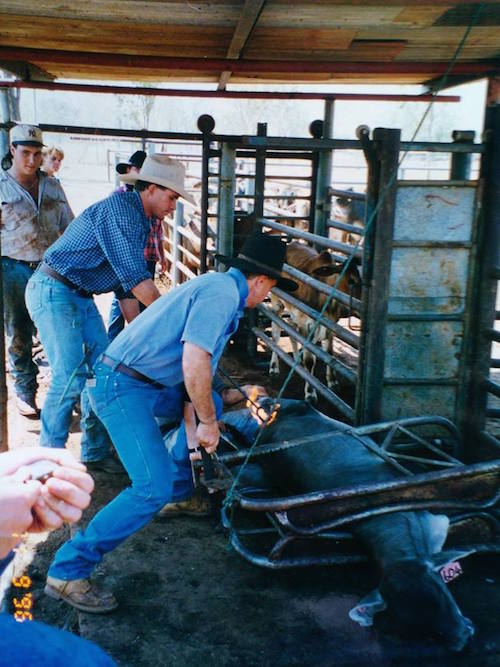 Processing weaner cattle at the Northern Territory Rural College with Peter Flamsteed and Steven Hart (1996).
Processing weaner cattle at the Northern Territory Rural College with Peter Flamsteed and Steven Hart (1996).
Next came the biggest reality check (there have been a few). In my wisdom I accepted a three month contract working with three strapping young fellas from my course fencing and yard building at Mataranka Station under station manager, Garry Riggs. I had never worked so hard in my life. The sand was sixty-two degrees celsius without a shady tree in sight.
Garry never seemed to acknowledge the work we did. I would be beside myself asking the boys what more we could do. They consoled me (and put up with me) and at completion of those three months when Garry came and saw us off, he reached out, shook my hand, dipped his head, and with a cheeky grin said – “Thanks”. I never forgot it. Praise is earned.
After working at Mataranka Station I felt I was ready to take on the world. I applied for a job in Western Australia and waved goodbye to Dad as I boarded the Greyhound coach ready for my next adventure.
For the next eight years I traversed Northern Australia working on stations and continuing my studies. I worked in WA (East Pilbara Cattle Co.), QLD (Weetalaba and Cona Creek), the NT (Kidman Springs and Florina), completed a Diploma in Applied Science at Emerald Agricultural College, and obtained my fixed wing pilot’s licence.
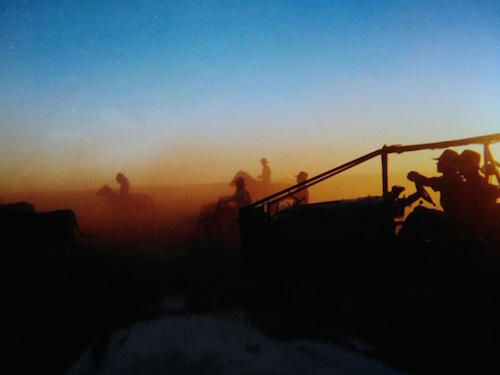 End of another big day, Yarrie Station, WA.
End of another big day, Yarrie Station, WA.
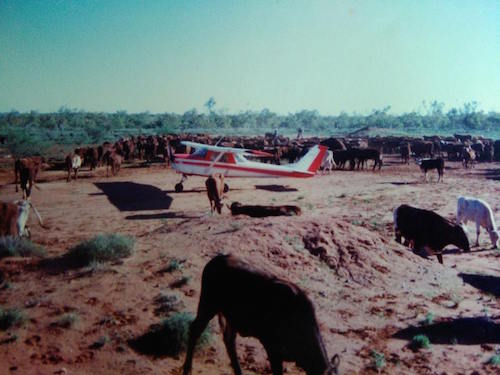 Station Cessna 150 that I flew at Yarrie Station.
Station Cessna 150 that I flew at Yarrie Station.
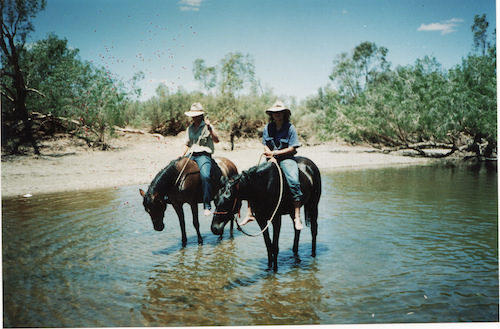 Cooling off in the De Grey River mid muster at Yarrie Station.
Cooling off in the De Grey River mid muster at Yarrie Station.
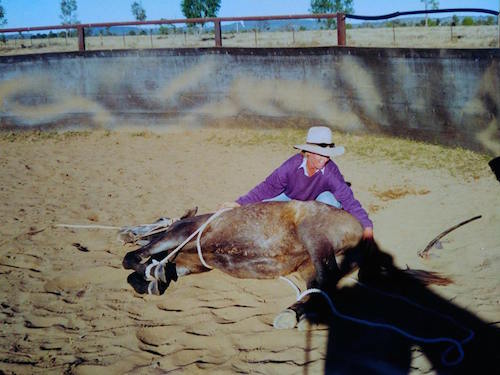 Gordon McKinlay colt starting school at Weetalaba Station, Collinsville, QLD.
Gordon McKinlay colt starting school at Weetalaba Station, Collinsville, QLD.
It was whilst I was overseeing Florina Station that I met Adrian Phillips — a local bull catching contractor — and Carl, his right hand man. Rather than shoot and waste the scrub bulls that were continually getting in with the Brahman breeders, we requested Adrian and Carl come out and catch them.
I remember vividly, travelling out to the paddock with the then owner of Florina Station, Jeff Blake, and Gehan — the Department of Primary Industries vet — to watch Adrian and Carl at work. We followed them to the paddock in their two catchers (old short-wheel-base Toyotas with steel-plated armour for protection). Once at the gate Adrian jumped from his catcher. As Adrian opened the gate Carl pushed Adrian’s catcher through so Adrian could close the gate and jump in and be gone. They worked like clockwork. It was hard enough to keep up with them on the road let alone through the heavily treed bush!
Adrian would work the bull towards a clearing and stay off the bull until Carl was in place. Carl and Adrian would then drive up on the bull, with Carl ‘hazing’, or pushing the bull back onto Adrian’s right hand side. Adrian would then let the catching arm go and steer left so he could catch the bull without damaging it’s legs as they often stopped when caught under the arm. Adrian would then drive to a sturdy tree and tie the bull by placing a head rope around the bull’s horns and tying a bowline to the tree. The boys were always careful to choose trees that were not about to drop limbs and not home to a big bee hive or wasp nest!
Adrian and Carl caught a body truck load of bulls overnight and were gone the next day. Catching struck me as a very specialised skill that required a load of experience and knowledge to make it worthwhile. Given the high risk of injury to drivers and the cost of maintaining vehicles and associated equipment, I could see why most opted to shoot scrub bulls instead.
I left Florina Station late in 2004 and moved into town to work in a local rural merchandise store. By 2005 I had teamed up with Adrian and we had started our own contract mustering and bull catching business. This added yet another chapter to my life in the cattle industry.
